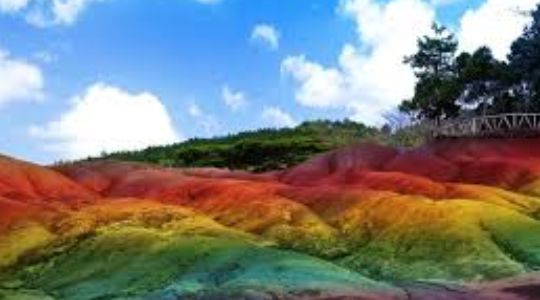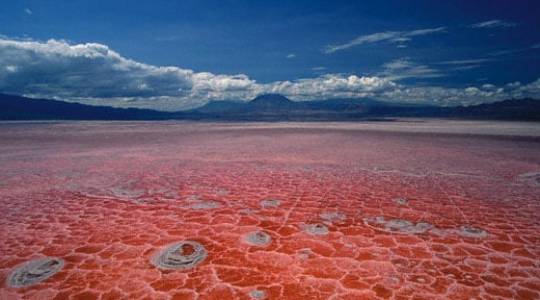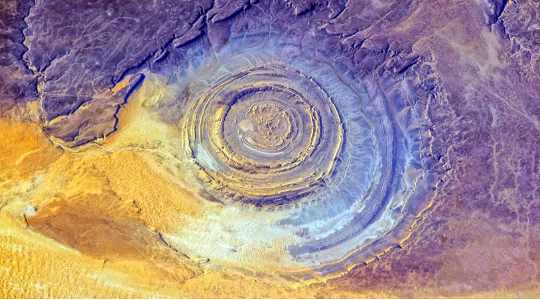Africa is blessed with natural endowments. Some of the mysteries of Africa is still being studied by archeologists, scientists, and geologists.
Tourists from around the world have continued to visit the continent not just for the cultural attractions but also to see the wonders found only in Africa. Here are some of the mysterious places you need to visit someday.
Lake Natron In Tanzania
One of the popular places attracting tourists in Tanzania is Lake Natron which is a mineral-rich soda lake in the northern part of the country just at the border with Kenya.
Colored a deep red from salt-loving organisms and algae, the lake reaches hellish temperatures and is nearly as basic as ammonia.
Although most human settlements throughout history have formed around lakes and rivers, Lake Natron is an exception. It has killed thousands of animals that couldn’t survive its harsh condition.
However, the lake is now a breeding ground for 2.5 million flamingos, despite the highly alkaline state of the striking red waters, making the preservation of the lake an environmental concern.
The water’s alkalinity comes from the sodium carbonate and other minerals that flow into the lake from the surrounding hills.
And deposits of sodium carbonate — which was once used in Egyptian mummification — also acts as a fantastic type of preservative for the animals unlucky enough to die in the waters of Lake Natron.
The Seven Coloured Earth Of Chamarel in Mauritius
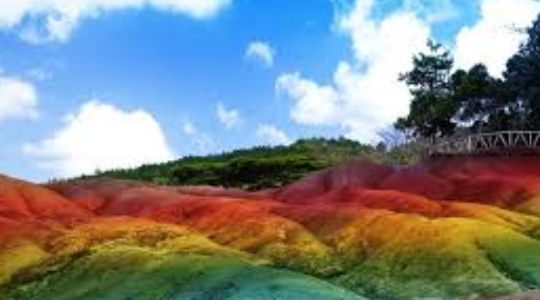
The “seven-coloured earth” of Chamarel is a geological curiosity and one of the major tourist attractions in Mauritius, a small African island country in the Indian Ocean that has a growing tourism industry.
The seven-coloured earth is a small (∼7500 m2) site in the Black River district of southwestern Mauritius.
The colours evolved through conversion of basaltic lava to clay minerals.
It is a relatively small area of sand dunes comprising sand of seven distinct colours (approximately red, brown, violet, green, blue, purple, and yellow).
Though in the heart of a large, dense forest, it is strikingly devoid of any vegetation.
Due to the tropical weather conditions, all water-soluble elements such as silicon dioxide have been washed out.
The remains are the reddish-black iron- and aluminium oxides which create shades in blue, cyan, and purple. The various colors developed due to the different compositions.
The site is on private land and attracts a fee of about 75 Mauritian rupees per person as of June 2008 to see the earth as well as the beautiful Chamarel waterfall on the same premises.
The Sinai Desert Cinema In Egypt
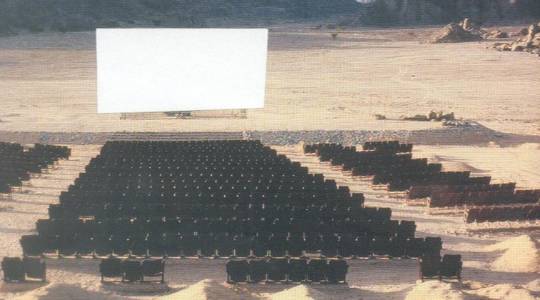
Just in the heart of the Sinai desert sits the abandoned cinema waiting for an audience that never came.
Award-winning Estonian photographer, Kaupo Kikksas visited the desolate area and brought back pictures of a dream that never came through.
Kaupo told the story of the failed project. He shared that the open cinema was built by a French man, Dynn Eadel who was hanging out with his friends in the desert one day and decided that one thing was missing ‘a cinema’.
Dynn actually did build the cinema, furnishing it with ancient Egyptian chairs, and projector equipment off an old movie theatre in Cairo.
However, on the day of the grand opening, the locals who didn’t agree with his idea messed up with the electricity, and nothing was filmed that day or any other day. The cinema just got abandoned since then in the middle of the dessert.
The Richat Structure In Mauritania
The Richat Structure, also known as the Eye of the Sahara or blue eye of Africa, is a peculiar geological formation in the Sahara desert in Mauritania, a country in Northwest Africa.
For thousands of years, the vastness of the geological formation — which has a diameter of 50 kilometers (31 miles) — was not apparent to humans.
One reason this Eye of Africa remained undiscovered for so long is that it is located in one of the most inhospitable places on Earth: the Sahara Desert.
To see it, you have to hike through miles of extremely harsh desert climate, battling aridity, dehydration, and extreme heat.
The blue eye is even visible from space and is now a familiar landmark for astronauts gazing down from the planet, according to the European Space Agency.
The amazing thing about this location is that you could be on it for hours without even knowing that you have reached it. The eye can only be seen from atop.


